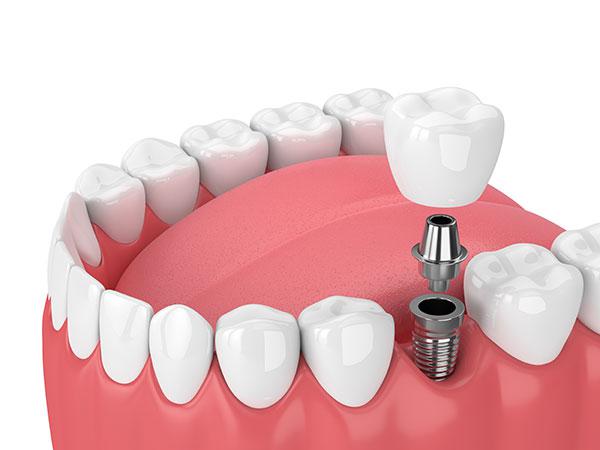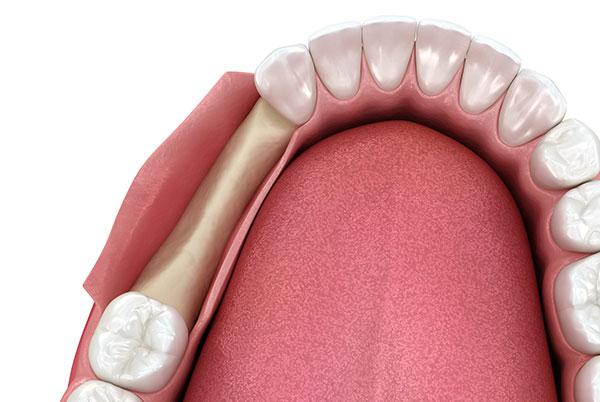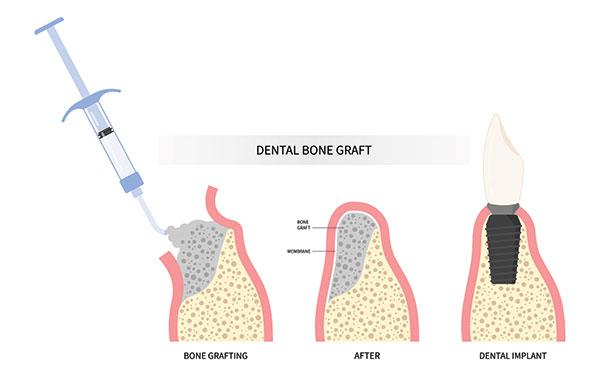 Who needs dental implants?
Who needs dental implants?
Dental extractions are one of the most commonly performed oral surgeries. Teeth removal may be a consequence of dental decay, dental trauma, gum diseases, or infections. Tooth removal leaves an empty socket which ultimately heals. However, missing teeth contribute to compromised chewing, may lead to speech impediments, and affect your smile. All this can put a dent in a person’s self-confidence, which necessitates teeth replacement.
Dental implants are screw-shaped surgical fixtures that are placed inside your jawbone via a tiny incision on the gum. Once the implants integrate with the jawbone, it forms a firm and permanent foundation for the placement of a crown, bridge, or implant-supported denture.
Dental implants are an excellent solution for people who are looking for a permanent tooth replacement solution. Dental implants can last a lifetime with good oral hygiene and require minimal maintenance once they heal.
How soon should I get a dental implant after a tooth extraction?
After tooth extraction, it may take up to 3 to 6 months for the bone to form in the area of the missing teeth. Most oral surgeons will recommend waiting 3 to 6 months after extraction for dental implant placement. So, ideally, 3 to 6 months is how soon you should get a dental implant after a tooth extraction. Delaying this can lead to bone loss which may necessitate additional treatments.
In some cases, if a good amount of healthy jawbone is present, a dental implant can be placed immediately on the same after extraction. In such cases, the surgery is properly planned. The tooth is removed carefully ensuring minimal disturbance to the adjacent structures. Next, an appropriate size and length implant is placed in the empty socket. Next, the gums are sutured, and then we wait for the implant to integrate with bone before establishing a permanent prosthesis.
Why do I need a bone graft after tooth extraction?
A dental bone grafting procedure allows for new bone formation and enhances the height and width in the concerned area.
In some cases, severe bone loss may occur, which can be a result of gum disease or trauma. Dental implants require a certain amount of jawbone height and width to be placed successfully. In cases where the bone loss is severe, a bone grafting procedure may be recommended prior to dental implant placement to ensure the dental implant placement is successful.
A bone graft can be autogenous when it is taken from your own body. The most common area for acquiring an autogenous bone graft is the back of the upper jaw or the chin area. A bone graft may be purchased from a human tissue bank (allograft), or it may come from an animal (xenograft). In some instances, artificial or synthetic bone grafts (alloplasts) may be utilized for bone grafting procedures.
Ridge augmentation and sinus lift surgeries are some of the most commonly performed bone grafting surgeries before dental implant placement. You may have to wait 3 to 6 months after a bone grafting procedure. It takes time for the new bone to form. Once it forms, a dental implant procedure can be successfully undertaken.
What happens if I don't get an implant after a tooth extraction?
 Tooth loss has grave consequences on the sanctity and stability of your oral and overall health. Teeth loss, even a single missing tooth, compromises chewing and speech and also affects facial aesthetics.
Tooth loss has grave consequences on the sanctity and stability of your oral and overall health. Teeth loss, even a single missing tooth, compromises chewing and speech and also affects facial aesthetics.
The jawbone in the area of missing teeth undergoes the process of bone resorption. This happens as the teeth' roots no longer stimulate the bone. Once the stimulus is lost, bone loss occurs as the bone in the particular area serves no purpose. Eventually, the bone will reduce considerably in its size, and placing an implant becomes impossible.
The process of bone loss becomes further enhanced if you are missing multiple or all your teeth. The way your facial skin wraps around the facial bones also changes. It can lead to facial sagging; the lips turn inwards, the facial fullness is gone, and the appearance of wrinkles is enhanced, which contributes to an aged appearance. All this compromises facial aesthetics and makes the person conscious of their smile and face. This negatively impacts a person's personal, social and professional well-being.
Since chewing is impaired, nutrition is also affected. An individual with missing teeth cannot consume a balanced diet due to impaired chewing, which can further lead to nutritional deficiencies.
Even a single missing tooth can compromise oral harmony. The gap left by the missing tooth will try to close itself by shifting adjacent teeth. This further disturbs the bite and promotes further teeth loss.
Owing to the complications associated with missing teeth, it is essential to replace them as soon as possible. Traditional dentures and dental bridges only provide half-hearted solutions to many of these problems. Furthermore, these teeth replacement options do not offer a solution to bone loss.
Implants are the only teeth replacement option that prevents bone loss, thus ensuring your facial proportions are unaffected and maintained properly. Implants also restore complete chewing as they can take the brunt of chewing forces. This also improves nutrition. The presence of teeth will also improve your speech which further gives a confidence boost. Implants act like natural tooth roots and, once restored with an appropriate prosthesis, look natural and yield excellent aesthetic results. Dental implant placement does not require any other tooth to be affected as they derive support directly from the bone. They promote and maintain oral harmony while ensuring you have the smile you desire.
If you have any dental problems which are necessitating tooth removal, please schedule a consultation with Dr. Alexander Kim in Phoenix today. A consultation before tooth removal will help you get on a proper rehabilitation program with the help of dental implants. If you have any more questions or wish to know more about our services, please reach out to us. Our team at Phoenix Oral and Facial Surgery is here to assist you and your family with a dazzling, healthy and complete smile.


